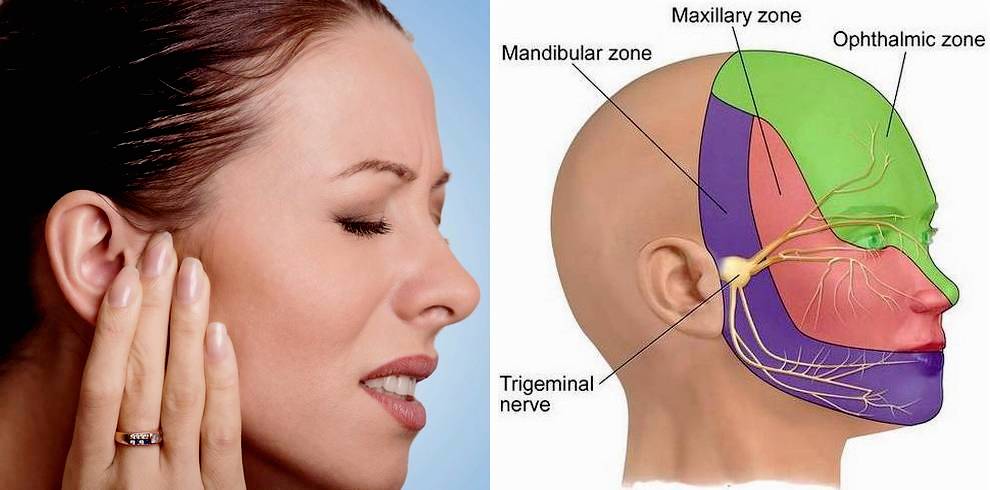
A Painful Intrusion
Around 1 in 10,000 people suffer from trigeminal nerve disorder (TND) each year, a burning, shock like pain in the face which may be at extreme levels.
There is no exact trigger for TND. This can be spontaneous, or brought on by shaving, eating, drinking, applying make up, smiling, any facial activity, or the environment.
The condition is prevalent in later years but possible at any age. One side of the face being stricken is more common but both can be, along with the oral area, jaw, eyes, or forehead.
As the image above shows, the trigeminal nerve consists of a complex root and branch structure, underlying much of our face. The system is there to carry sensation messages to our brain but can at times malfunction.
Bouts can vary, from brief spasms, to longer lasting, or intermittent and in almost all cases, they warrant specialist medical support.
Professional Diagnosis
TND is a very individual condition, where discussing your symptoms with an experienced maxillofacial consultant will make a difference.
They help to rule out causes such as jaw joint conditions, or wider nerve injuries and investigate each case, through experience and scientific testing.
Reflex tests may help to establish whether your symptoms are caused by a compressed trigeminal nerve. An MRI scan can pick up locations where the nerve is compressed.
This is most often caused by pressure from nearby blood vessels, or more rarely unknown tumours, or physical trauma. Injury to the myelin sheath which surrounds the nerve is a possibility.
Multiple sclerosis can bring this type of damage, brain lesions and strokes are at times associated with trigeminal neuralgia, although the cause is more often independent.
A Range Of Treatment
Alongside diagnostic tests, your consultant will have discussed your health and medical history. Trigeminal nerve disorder is a variable condition, where detail matters for treatment decisions.
There are cases which will respond to oral, or injected medication. Anticonvulsants can be effective in reducing electrical impulses from the nerve, the ability to send pain messages to the brain.
Antispasmodic agents could assist through muscle relaxation, or be combined with anticonvulsants. In both cases, dosage control and monitoring for side effects is important.
A range of surgical procedures are used to treat TND. They can be approaches which deliberately damage the nerve to reduce the pain this creates, although numbness, or pins and needles in the area could ensue.
Microvascular decompression surgery is a successful treatment, which relieves compression of the trigeminal nerve by an artery or vein. This is however a significant surgical procedure.
Individual Support
The spasm like pain TND can bring is often hard to bear and may become more frequent, or intense over time. All the team at our London clinic appreciate the seriousness of the condition and how much impact this has on life.
A well known celebrity went public on her struggles with trigeminal neuralgia. Professor Shakib asked by the media to provide expert opinion on TND and the help available.
We recognise that diagnosis, or solutions are not always straightforward. Even if no compression is visible, you could still have trigeminal nerve disorder, treatment that works well in one case may not do so in another.
Analysis of your condition will help the specialist supporting you and bring informed decisions on treatment. There is often no need to be harried by a life of facial pain, when good care is available.
- Make an appointment
- Phone – 020 7935 8627
- Email – pa@shakib.org


